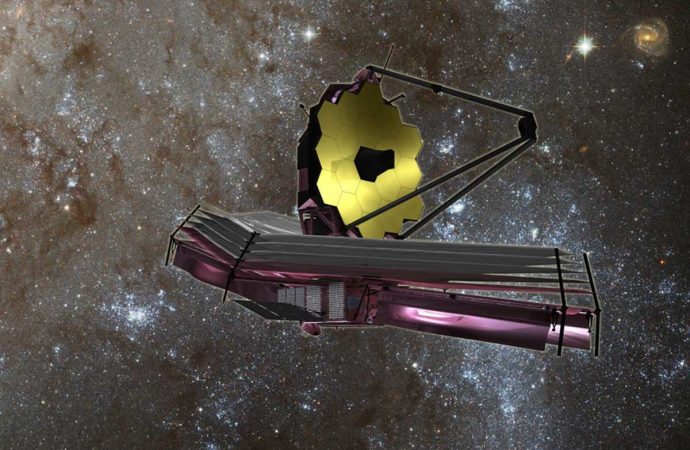The search could be on. A new study suggests that Hubble’s successor, the James Webb Space Telescope (JWST), has the potential to search three freshly discovered planets to see if anyone lives there.
The planets, which orbit a star just 40 light years from Earth, were discovered last month. Researchers suggest the JWST could probe their atmospheres for signs of life after it launches in 2018.
But will it? This is the latest salvo in a debate raging through the astronomy community. Astronomers are finally on the technological brink of being able to answer the question: Are we alone? Although the answer could be transformative and NASA cites the search as part of its primary mission, the quest so far has been slow and indirect – and many think that’s not enough.
“NASA has been shameful in not searching for extraterrestrial life and at the same time claiming that’s one of the motivations for their programmes,” says Chris McKay, an astrobiologist at NASA’s Ames Research Center in Mountain View, California. “The Mars programme counts life as the reason for the programme, and then the missions NASA implements don’t even approach the question at all.”
McKay cites the example of the upcoming Mars 2020 rover, which will primarily search for signs that life once existed on the Red Planet. Rather than hunting for alien microbes today, the rover will set aside samples that NASA hopes some future mission will bring back to Earth, where we can probe them for signs of past or present life. McKay thinks this is a terrible mistake.
And he’s not alone. As well as many other scientists who support the search for life elsewhere, it tops the lists of the most exciting questions driving science today for people outside the field.
“To some extent we’re all publicly funded scientists, or the majority of us are, so what the public wants us to find out is I think a legitimate motivation for trying something, even if it’s difficult,” says Joanna Barstow at the University of Oxford, who led the study on exoplanet detection with the JWST.
Slow and steady
But others don’t think research should rely on a popularity contest. “While I am extremely grateful for the public’s excitement about looking for life – and indeed I think we should – I also think that NASA and other federal research agencies deserve the latitude to make strategic decisions that may or may not reflect the current desires of the public,” says Christopher Carr, a research scientist on the Search for Extra-Terrestrial Genomes project.
All NASA’s apparent dawdling may be a vital step on a long path. “How do we even begin to look for life?” asks Casey Dreier, the director of space policy at the Planetary Society in Pasadena, California. He thinks we need to first characterise what Mars was like before we can know where life might have evolved and what form it might have taken. Only then can we actively look for it.
This point of view calls for a slow, steady pace. “NASA’s next step is prudent: it’s slow, it’s methodical, it’s scientific,” says John Mustard, who chaired the science definition team for the Mars 2020 mission.
That’s not to say Mustard and others are thrilled with the slow rate. “I am impatient because I don’t think they’re going fast enough,” he says. “I think they’re taking the right steps. This mission will be good, but the follow-up mission should be on the drawing board right now.”
Any signs of life?
The risk that we won’t find anything is also high. It’s possible that life doesn’t exist on Mars today, and perhaps it never did. Those new exoplanets, too, might not be water-soaked worlds teeming with life. To even check would require 30 hours of observations with the JWST spread across five years – a big commitment for one of the world’s most sought-after telescopes.
And if we focus on those planets to the exclusion of others yet still find nothing, would it be worth it? The search for life, after all, is not NASA’s sole mission.
“The search for life is a fundamental question about what it means to be human, what it means to be alive, what is our place in the universe – so there’s a tremendous drive to answer this,” Carr says. “But it’s not the only question that has value. Understanding Mars, even if life never arose there, is incredibly valuable if for no other reason than to understand why Earth ended up different.”
Ultimately, even those who are frustrated by NASA’s slow and strategic steps should have faith in the process, says Dreier.
“I trust science,” he says. “It’s not a blind faith, but the process of science has gotten us this far for a lot of reasons. And I think it’s important to have confidence in the process.”
Source: New Scientist

































Leave a Comment
You must be logged in to post a comment.